“The one way for us to become great, perhaps inimitable, is by imitating the ancients.”
This quote from one of Winckelmann’s publications is what our blog is all about.
Let me walk you through this quote and the topic we are going to cover.
You already have an idea that there have been several different movements introduced in the history of art.
And you must also be aware of classical art that portrays the image of Greek and Roman history.
But, in the late 18th century or, you can even say, the early 19th century another art movement was introduced that was somewhat similar to the classics.
Can you guess?
It was “Neoclassical art.”
But let me clarify that this art movement was the revival of classical art.
Yes, a revival!
A part that captures our mind is why a revival of any art movement?
What initially caused this movement to arise?
Is there really a need for such an art movement, or is it just a part of experiments?
Well, all your queries are brought to this one blog.
By the end, you’ll be familiar with all the aspects of Neoclassical art.
So, sit back and enjoy the read, which will uncover thousands of realities about Neoclassicism.
Table of contents
What is Neoclassical Art?
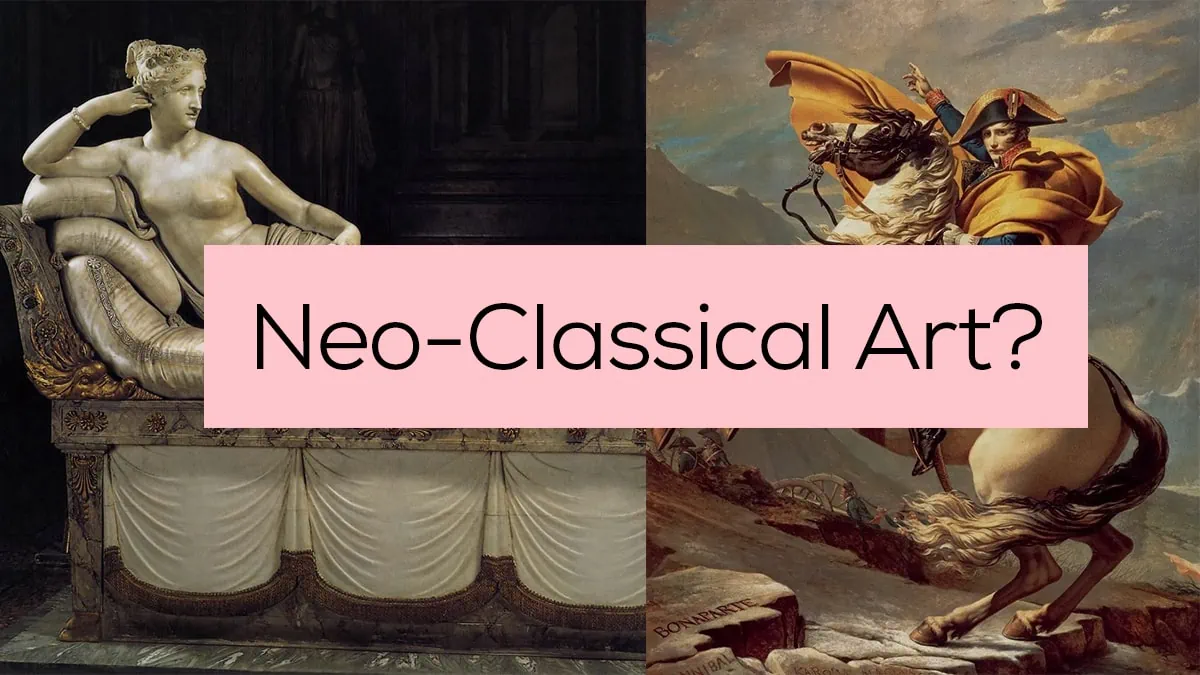
People mostly ask, “What is neoclassical vs. classical art?”
Well, they are not opposite, but instead a continuous art movement with different styles and natures.
Didn’t get me?
As I’ve mentioned, Neoclassicism was a return to ancient Greco-Roman art.
In other words, it is an imitation of the classical period with a new meaning.
But what is the main reason behind the introduction of the neoclassical period or continuing classical art with a new name?
Neoclassicism was not only the outcome of new discoveries of ancient culture and styles but also the rise against the luxurious Baroque and Rococo art movements that already existed.
The art was to portray the ideas of simplicity and a civilized society.
If you look at the term “neoclassical,” it originates from the Greek roots (neos), which mean new, young, or fresh, and “classics,” which translates to highest class.
It was a new movement in art spanning not only some amazing neoclassical paintings but sculptures, decorative furniture, and architecture.
The movement included four main things that gave rise to Neo-Classical art.
- Baroque and Rococo art
- Writings of Winckelmann
- Excavations of Pompeii and Herculaneum
- 18th-century Age of Enlightenment
The main Neoclassical movement conflicts with the 18th-century Age of Enlightenment, also known as the Age of Reasons.
I have explained the entire piece in the next part, which will make you understand it in an elaborate way.
Influence and Growth of Neoclassicism
This topic surely needs to be included.
I mean, who were the people or the scenarios that contributed to the growth of the neoclassical movement?
We already know about the Enlightenment but one of its major supporters is Johann Joachim Winckelmann.

He was a German art historian and archeologist.
Many also believe that Winckelmann was the father of art history.
This belief was because of his two publications, “Thoughts on the Imitations of Classical Works in Painting and Sculpture” and “The History of Art in Antiquity.”
His writings did the magic in contributing to Neo-Classical art.
Johann described the Greek-Roman art culture in the most detailed form in his books.
He created the first chronological order of classical art.
In the mid-1700s, he explained how art should aim for simplicity and calmness.
He also mentioned that the only way we could become great is to bring back the ancients and by this, he meant imitation of classical art.
His writings made a huge impact on the return of Greek and Roman ideals.
Another part that influenced the neoclassicism movement were the excavations of Pompeii and Herculaneum.
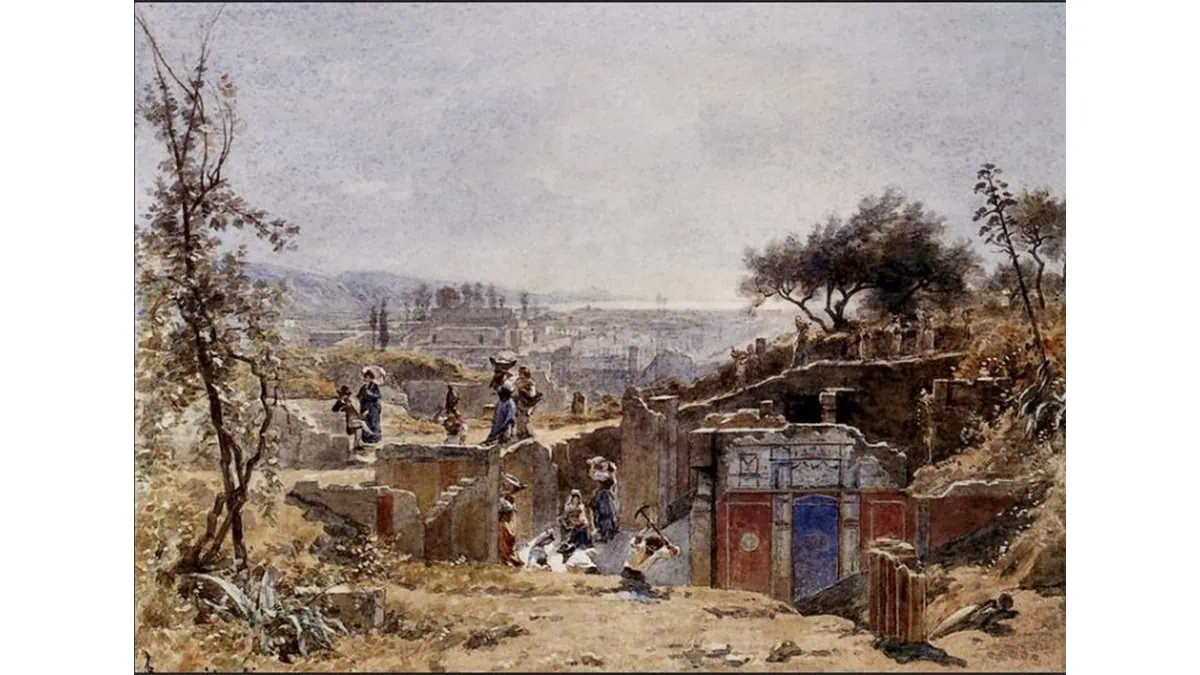
You must be wondering how excavations can influence a movement?
Curiosity, my friend, is the key to many inventions.
Curiosity to discover antiquity led to the digging up of many ancient sites.
The most popular were Pompeii (excavated in 1748) and Herculaneum (excavated in 1738).
The Grand Tour was a new way to discover antiques, which made it possible throughout Europe.
The tour included only upper-class men, who brought many souvenirs from their travels.
The extensively vast collection of art and culture from the classical era illuminated neoclassicism.
Themes, styles, nature—these mold art into a perfect shape.
To get a view of how neoclassicism is, we surely need to know its features and qualities.
Suggested read: 24 Interesting Renaissance Facts
Characteristics of Neoclassical Art

Quality is the primary idea used to describe any art movement.
It narrates all the aspects of art to its admirers.
I’ve already iterated on the simplicity and calmness Neoclassical art possesses.
If you ask me about the themes of Neoclassical art, I’d reply in just five words:
- Harmony
- Clarity
- Restraint
- Universality
- And Idealism
To make you understand all of it, let me explain it in a detailed manner.
Honor and Simplicity
“Noble simplicity” is often brought up in Winckelmann’s “Thoughts on the Imitation of Greek Works in Painting and Sculpture” (1750).
He writes about Greek sculptures and exemplifies them with reference to Raphael paintings, who was one of the best Renaissance painters.
One primary characteristic of neoclassical art was the return to simplicity and symmetry.
The harmony in art was the most important feature of Neo-Classical art.
It is important to note the difference between imitation and copying art.
All the Neoclassical art is an imitation of classical art.
It revives the clarity of shapes from the classical period.
Let us visit the mini gallery, which displays the best of Neoclassical art.
Suggested Read: The Death of Socrates
5 Famous Neoclassical Artists and their Arts
Talking about the Neoclassicism period will be incomplete without the famous paintings and the artists who made the era beautiful with their skillful hands.
There are two famous French painters worth noting when it comes to Neoclassical art—Nicolas Poussin and Claude Lorrain.
These two artists can also be counted among the influential people who defined neoclassicism.
They belong to the Baroque era, which makes them the most magnificent Baroque artists of all time.
Their styles depict classical ideals and historical views from Biblical times.
Some of the famous neoclassicism in art can be seen below.
1. Parnassus by Anton Raphael Mengs

| Date | 1761 |
| Housed In | Gallery of the Villa Albani (now Villa Torlonia), Rome |
| Estimated Price | More than $100 million |
| Medium | Fresco |
| Dimensions | 313 cm x 580 cm |
About Mengs:
- Anton Raphael Mengs was a bohemian painter and ancestor belonging to the neoclassical art style.
- Even though he painted in baroque style at various times.
- Winckelmann described Mengs as the “greatest” artist of the time.
- He shared values and beliefs with Winckelmann, where Mengs believe in significant classical art.
- They both worked closely together.
About Parnassus:
- Parnassus is one of the well-known works in which Mengs depicts his move towards Neo-Classical art.
- This art was an inspiration by one of Raphael’s frescoes with a similar title, The Parnassus (c. 1509–1511).
- The fresco narrates the story of Apollo (the Sun God), who is surrounded by various muses.
- The art had subdued colors on the robes and clearer lines.
Suggested read: Famous Baroque Paintings
2. Virgil Write his Epitaph at Brindisi by Angelica Kauffman
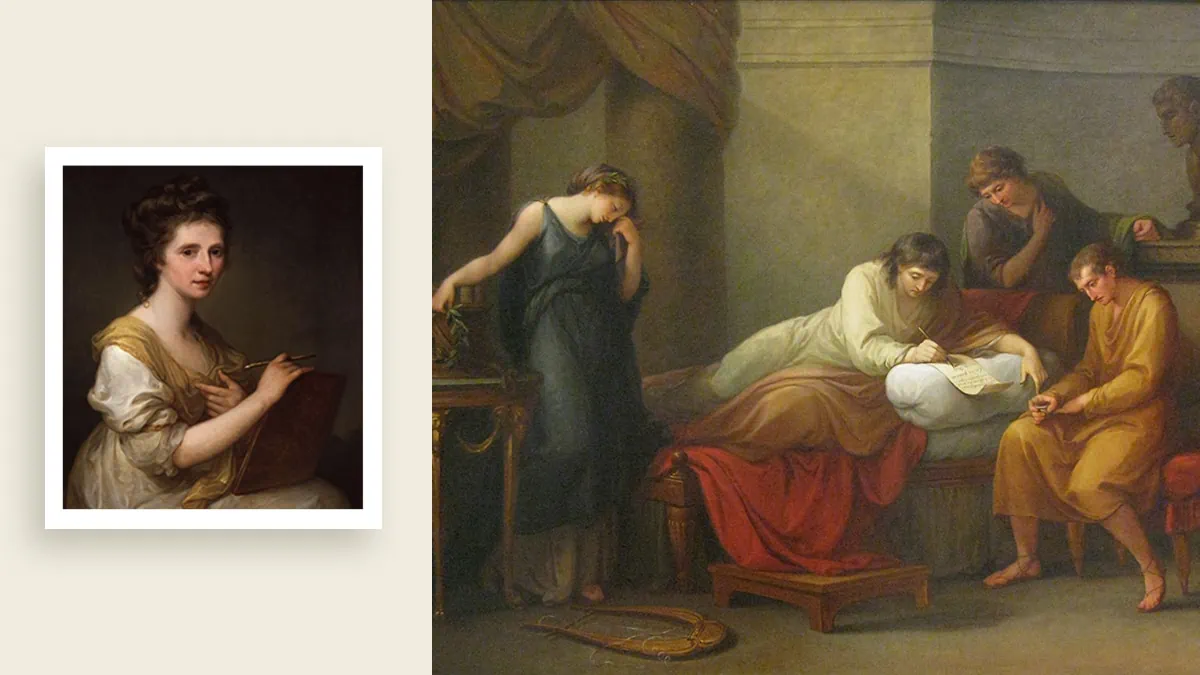
| Date | 1785 |
| Housed In | Carnegie Museum of Art |
| Estimated Price | Not Disclosed |
| Medium | Oil on canvas |
| Dimensions | 99.1 x 125.7 cm |
About Angelica Kauffman:
- A painter who exemplifies artistic talent from childhood is how one describes Angelica Kauffman.
- She was known for depicting a style resembling Rococo Art.
- The 1770s were the time when she adopted the Neoclassical style of history painting.
- Her inspirations were writers like Homer and Alexander Pope.
- Angelica also worked with Benjamin West, which led to the popularization of British historical paintings.
About Virgil Write his Epitaph at Brindisi:
- This is one of the masterpieces of Neoclassical art that Kaufamann painted.
- The simplicity takes control of the viewer’s eye.
- The title itself describes the whole scene taking place in the painting with zero chaos.
- We can feel the calmness through the art, which makes it incredibly wonderful.
Interesting fact: Kaufmann was counted among the most famous female painters of all time.
3. The Death of General Wolfe by Benjamin West
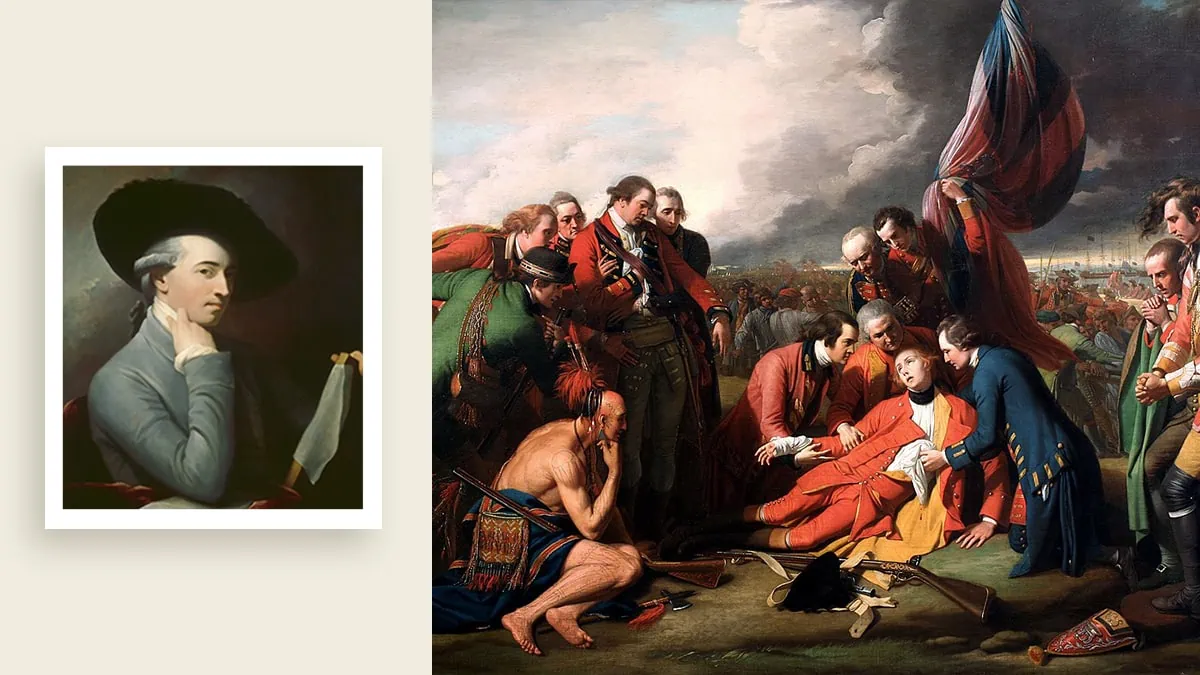
| Date | 1776-1770 |
| Housed In | National Gallery of Canada |
| Estimated Price | Commissioned for 300 francs (1770) |
| Medium | Oil Paint |
| Dimensions | 1.51 m x 2.13 m |
About Benjamin West:
- Benjamin painted with deeper moral meanings.
- He extensively traveled to Rome and England and became known as one of the British painters with historical narratives.
- West was deeply influenced by Greek and Roman art during his journey to Rome.
- As a result, he took forward the art in the 1760s as well as the ideals and virtues of the Enlightenment.
- Benjamin also studied under Winckelmann and collaborated with many prominent artists, like Angelica Kaufmann.
- He also became a member of the Royal Academy of Arts in 1768, where he was chosen as president.
About The Death of General Wolfe:
- This Neoclassical art depicts the Battle of Quebec.
- The best part about the artwork is the way West depicted the characters in modern-day uniforms instead of classical attire.
- This made the painting revolutionary.
- Reportedly, the art was already done by another artist, Edward Penny.
Suggested read: 11 Rococo Paintings (Art That Made French Rococo Popular)
4. Oath of the Horatii by Jacques-Louis David
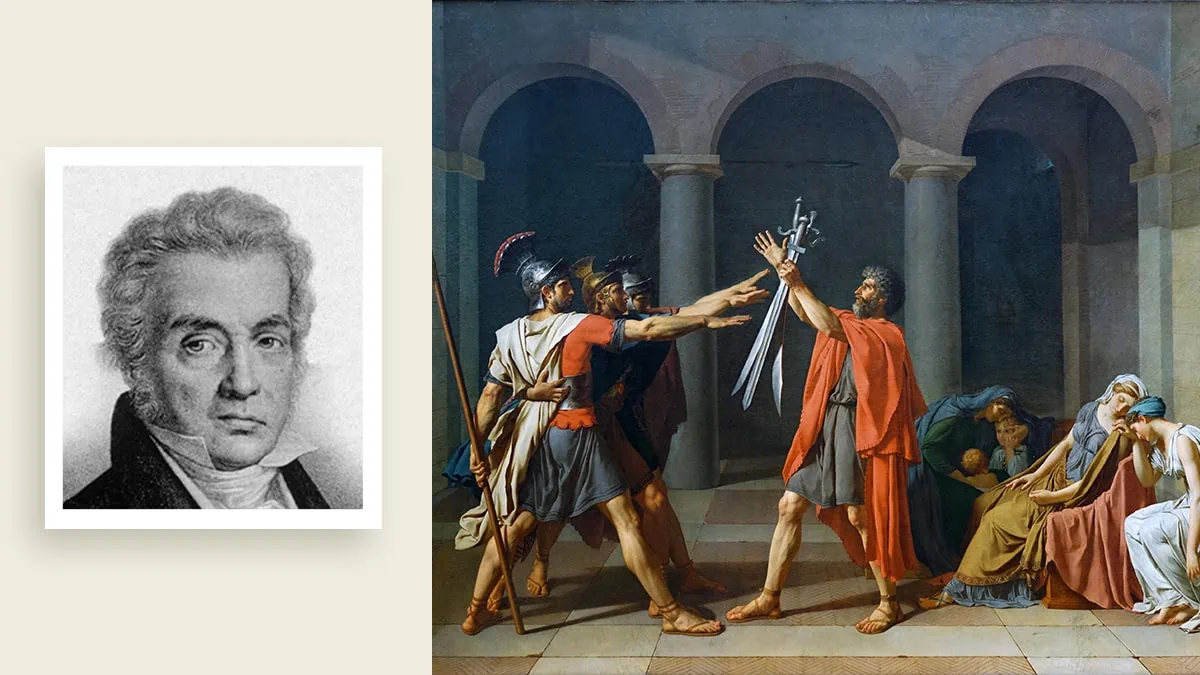
| Date | 1784 |
| Housed In | Louvre, Paris |
| Estimated Price | Not Disclosed |
| Medium | Oil Paint |
| Dimensions | 3.26 m x 4.2 m |
About Jacques-Louis David:
- David is considered the epitome of Neoclassical painters.
- His artwork depicts the true essence of Neoclassical art and styles.
- He continued his art career in Rome, where he produced his most renowned paintings.
- To note: He produced his paintings during the French Revolution, which have depictions of the scene.
About Oath of the Horatii:
- The most famous piece by David of neoclassic period.
- We can clearly make out from the painting the scene where three men are opposing a man, with three women and children mourning behind.
- It narrates the Roman story of the Horatii trio brothers swearing to protect the country against the Albans.
5. La Grande Odalisque by Jean Auguste Dominique Ingres

| Date | 1814 |
| Housed In | Louvre, Paris |
| Estimated Price | High auction record at Christie’s: $22 million in 2009 |
| Medium | Oil on canvas |
| Dimensions | 88.9 × 162.6 cm |
About Jean Auguste Dominique Ingres:
- Another prominent Neoclassical painter was Jean Auguste.
- He was a strong supporter of Nicolas Poussin’s art style.
- His expressiveness is the key to the amazing neoclassical paintings.
- The attributes are associated with Romanticism.
About La Grande Odalisque:
- The art describes a nude woman staring at the onlooker.
- This painting continued until the modern period, when the audience viewed it as a relationship between a naked woman and all the male observers.
- He defines characteristics of neoclassical art with “clean lines” and the subject of an uncovered female figure.
- Expressiveness is the key, even though the proportion in art is not exactly true to nature.
I wonder how these Neoclassical arts will look on my wall. Are you having the same thoughts?
Well, I know a place that can turn your vision into reality.
Get a replica of your favorite Neoclassical art at an affordable price at PortraitFlip.
Click on the link below and witness it with your own eyes!
Conclusion: The Endless Neoclassicism

Unfortunately, the Neoclassical era came to an end in the 1850s with the rise of the Romanticism art period (1780s–1830s).
Romanticism and Neoclassicism happened together but were like sea and sky.
What I mean to say is that they are opposite in style and nature and can never complement each other.
Neoclassicism revolves around rationality and classical ideals of virtue and order, whereas Romanticism was all about expressing emotions.
You must be thinking that this is the end of Neoclassical art, right?
But how can classic art go out of style?
Despite the introduction of a completely new style, Neoclassicism continued to live in the hearts of the people.
We can still notice Neoclassic style in various buildings throughout Europe.
Neoclassicism was a return to classical style; how can it fade away so easily?
It revived itself from an already existing art movement with the ideals of ancients, symmetry, and rationality.
The movement dutifully portrayed what the classics were during the Greco-Roman era.
How You Doing Readers?
I know that learning about art movements may make you yawn.
With this thought, I have made my writing interesting to read and tried to answer all the queries that may occur to you while going through the topic.
I hope you enjoyed the blog and gained all the information you were looking for.
If you have any questions to ask or suggestions to give, please let me know via comments.
I would like to know about the art movement from different perspectives.
I’ll be back with my next piece soon.
Till then, keep reading and exploring. Have a great day!
Frequently Asked Questions
Neo is a Greek word (neos), which means new. Neoclassical means revival and creating a new way into the classical past.
Neoclassicism in art focuses on the ideal human form as opposed to the less than perfect shapes of real people.
Types of Neoclassicism are architecture, sculpture, and the decorative arts.
The Neoclassicism art period began in the 1760s and reached its peak during the1780s-90s.




